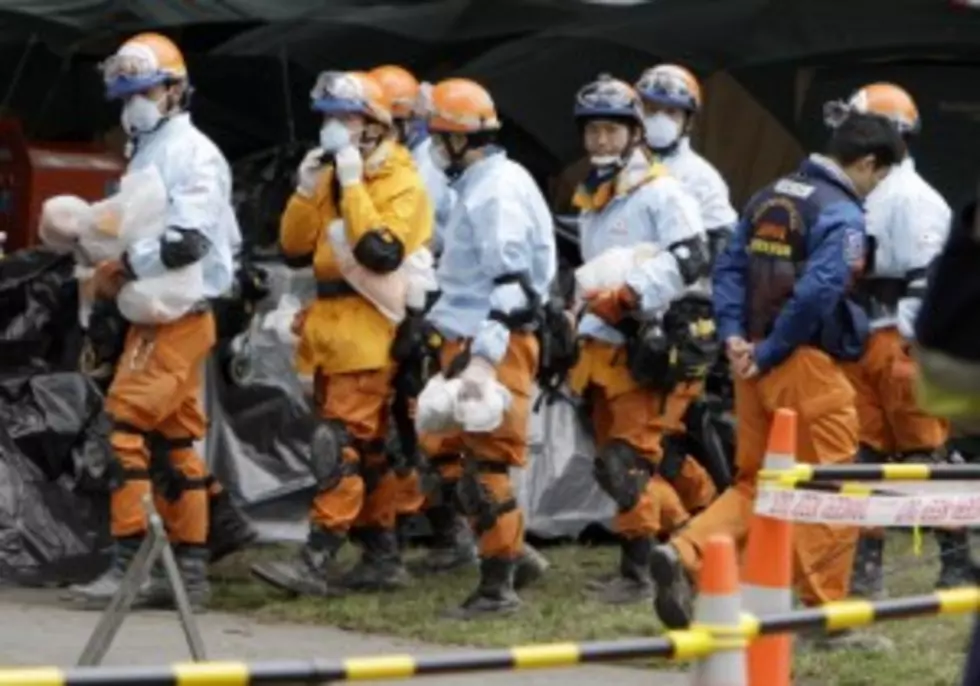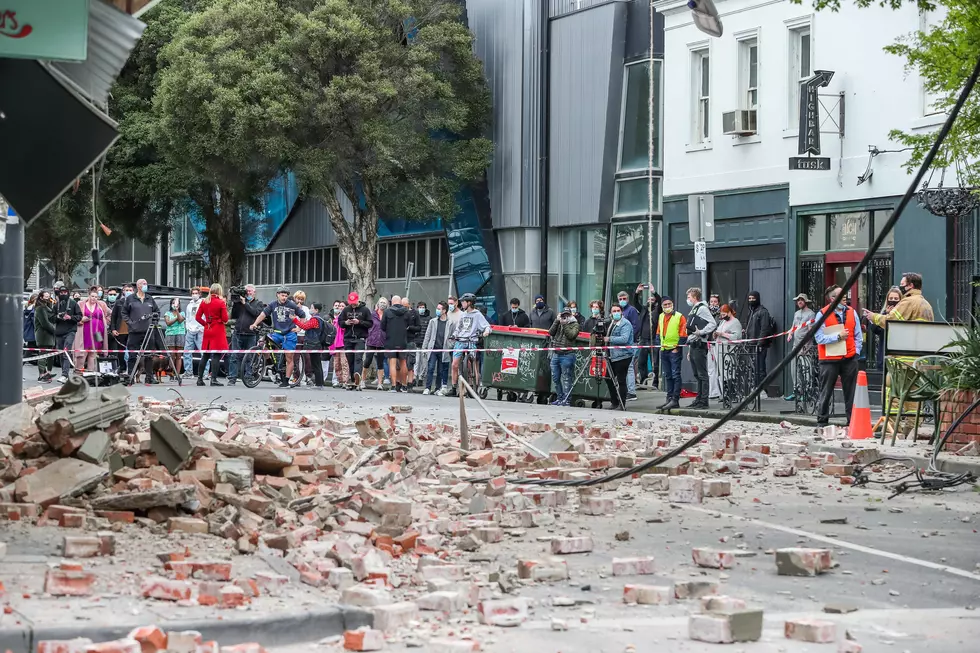
Rescuers Scramble To Save Lives As Aftershocks Jolt Japan
Unbelievable tragedy continues to unfold in Japan. There was also an explosion recently at a nuclear power plant there that adds leaking radiation, or even outright meltdown, to the threats stemming from the massive earthquake. Here is the latest as of Saturday afternoon:
Rescuers plucked dazed survivors from collapsed homes, muddy waters and raging fires Saturday, a day after a powerful earthquake tore through northeastern Japan, unleashing waves that swallowed entire neighborhoods along the coast.
More than 900 people were killed and about 700 were missing, Japanese public broadcaster NHK reported. The number of dead is expected to rise as rescuers reach more hard-hit areas.
In the town of Minamisanriku, 9,500 people are unaccounted for, Japan's Kyodo News Agency reported, citing local officials. That figure is more than half the population of the town, which is located on the Pacific, the news agency said.
More than 3,000 people had been rescued, according to Japanese Prime Minister Naoto Kan, Kyodo News Agency said.
"We'd first like to focus on saving lives and secondly the comfort of the evacuees," Kan said. "There will be many resources that will be needed for this evacuation process."
Friday's 8.9-magnitude quake was centered about 130 kilometers (80 miles) from Sendai, a farming region already battling youth population losses to big cities, leaving aging residents struggling to keep up with the global economy.
Aftershocks continued to jolt the island nation Saturday, including two at 6.1 and 6.4 magnitude.
Kan visited areas of northeastern Japan affected by the quake and tsunami Saturday, according to Kyodo News Agency. He visited a nuclear plant in Fukishima that was affected by the disaster, and inspected other areas from the air.
In the city of Shirakawa, south of Sendai, rescuers dug through rubble with shovels to try to reach 13 neighbors trapped when the earth opened up and swallowed their homes.
Relatives and friends stood in the cold, quietly watching, praying and waiting. Others wept.
In other affected areas, military choppers plucked people from rooftops. In some cases, rescuers trudged in muddy water, carrying survivors on their backs. Weary, mud-spattered residents wandered through streets filled with crumpled cars and other debris.
The original quake struck Friday and left towns and villages along the northeastern coast devastated. Scores of aftershocks followed Saturday.
"The earth shook with such ferocity," said Andy Clark, who experienced the main earthquake at Narita Airport near Tokyo, about 370 kilometers (230 miles) southwest of the quake's epicenter. "I thought things were coming to an end. ... It was simply terrifying."
The quake also disrupted rail service and affected air travel, but limited rail service was back Saturday. Flight cancellations left at least 23,000 people stranded in two Tokyo airports, Kyodo News Agency said. Departing and arriving flights resumed Saturday.
Six million households, more than 10% of the total in Japan, were without electricity, said Ichiro Fujisaki, the nation's ambassador to the United States.
Central Tokyo resident Michelle Roberts said people are accustomed to earthquakes in the area, but this was different.
Read entire story via Rescuers scramble to save lives as aftershocks jolt Japan - CNN.com.
More From B105


![70 Years Ago Today the First Atomic Bomb Was Dropped on Hiroshima [VIDEO]](http://townsquare.media/site/150/files/2015/08/enola-gay.png?w=980&q=75)
![Watch Amazing Footage of Everest Base Camp Hit By Avalanche [VIDEO]](http://townsquare.media/site/150/files/2015/04/FireShot-Screen-Capture-471-Hit-by-Avalanche-in-Everest-Basecamp-25_04_2015-YouTube-www_youtube_com_watch_v_JC_wIWUC2U.jpg?w=980&q=75)

![Since Tupac’s Surprise Performance Are Hologram Concerts Like This In Our Future? [VIDEO]](http://townsquare.media/site/150/files/2012/04/hqdefault4.jpg?w=980&q=75)

![Oklahoma Earthquake Causes YouTube Blogger To Freak Out [VIDEO]](http://townsquare.media/site/150/files/2011/11/Video-Blogger-Reacts-to-Oklahoma-Earthquake.jpg?w=980&q=75)
![Japanese Scientists Develop Kissing Machine [VIDEO]](http://townsquare.media/site/150/files/2011/05/japanese-scientists-develop-kissing-machine.jpg?w=980&q=75)
